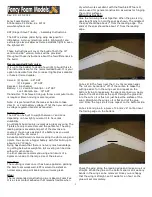
T
RAINING
M
ANUAL
–
L
ANCAIR
IV/IVP
Hypoxic hypoxia occurs when there’s just not enough oxygen available, such as
from flying at high altitudes. Histotoxic hypoxia is caused by the body being
unable to absorb oxygen at the tissue level. It’s generally the result of alcohol or
drug consumption. When the heater cuff burns through (not in a IV-P of course),
you’re likely to suffer hypemic hypoxia. Even at low-altitude, where there’s
otherwise plenty of oxygen, carbon monoxide will prevent the blood from
absorbing it. Stagnant hypoxia is what happens when G-loads pool the blood in
areas away form the brain. Supplemental oxygen probably won’t help.
CAMI’s lecture on basic gas laws and hypoxic physiology reviews some of what
you already know (or thought you did) but it introduces some new material too.
The lasting lesson relates to the onset of hypoxia itself. When you truly
experience hypoxia under controlled conditions, you realize how little you really
understand it. Further, you know that being relatively resistant to hypoxia is more
of a dangerous handicap than being highly susceptible to it. The chamber ride
will cure you of your tendency to remain off oxygen until the onset of symptoms.
Finally, the oxygen paradox event makes you less inclined to experiment with
hypoxia in an airplane. You will consider yourself an oxygen wimp. Given the
alternatives, that’s not a bad way to be. Consider the affects of hypoxia given
below.
HYPOXIA’S EFFECTS
The earth’s atmosphere by volume is approximately 21 percent oxygen and 79
percent nitrogen. There are other gases in the atmosphere, but only in trace
amounts. So, for the purposes of understanding hypoxia, those two percentages
are adequate.
Wherever you are in the earth’s atmosphere, those proportions remain
unchanged. In dry air, the ambient pressure is always 21 percent due to oxygen
and 79 percent due to nitrogen. At sea level, the atmospheric pressure on a
standard day in dry air is equivalent to a column of mercury 760 mm high. If the
air is dry, the ambient oxygen (partial) pressure is 160 mm. The ambient
nitrogen pressure is 600 mm. Again, that is at sea level on a dry day.
When that air is inhaled, it passes through the trachea where it is fully saturated
with water to prevent damage to delicate lung tissues. This water vapor is
another gas, which exerts its own partial pressure, alternating the arithmetic:
•
Ambient air (S.L.): 760 mm
•
Water vapor partial pressure: -47 mm
•
Tracheal air pressure: 713 mm
Once the tracheal air is saturated with water vapor, oxygen and nitrogen together
are only responsible for 713 mm of partial pressure. Twenty-one percent of 713
‐
20
–
©
Copyright
2007
LOBO
May
not
be
copied
without
permission.











































